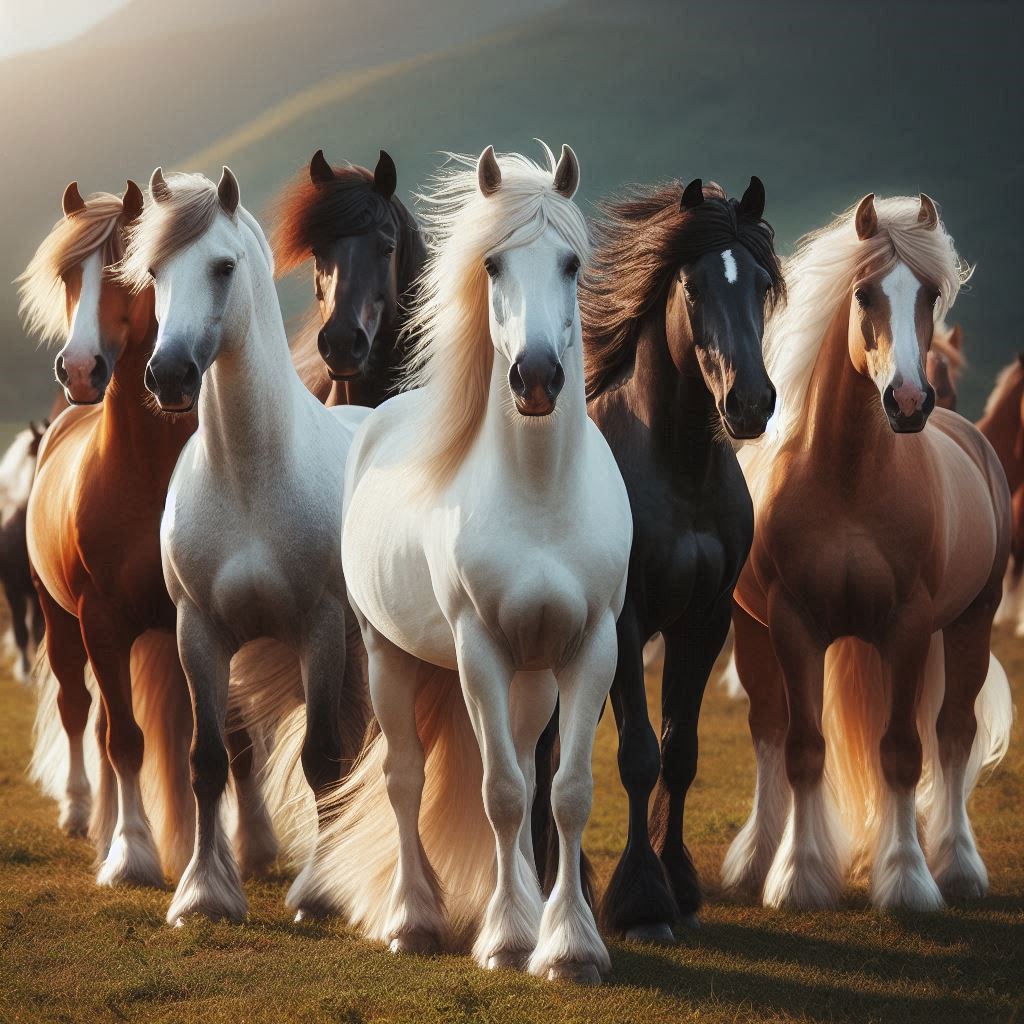Drona Parva describes the events during the five days (days eleven to fifteen) when Drona was the commander-in-chief of the Kaurava army. He advised Duryodhana to distract Arjuna and keep him away from Yudhistira to capture the elder Pandava brother. When Sanjaya was describing the day’s events, Dhritarashtra wanted to imagine the scenes in his mind. He asked for many details like the types of chariots, horses, war flags, and bows used by different heroes on both sides.

Here, we’ll look at the horses mentioned by Sanjaya and get a sneak peek into the preferences of some of the major warriors in the Kurukshetra war.
- Bhima’s chariot had horses with the complexion of an antelope (brownish-orange with spots)
- Satyaki’s horses were silver in colour
- Nakula’s handsome horses were from Kambhoja and decorated with feathers of parrots
- Sahadeva’s horses were dark as the clouds (grayish black)
- Yudhistira’s horses were the fastest and caparisoned with top-quality gold
- King Draupada’s chariot had a golden umbrella to protect him from direct sunlight
- Archer Shantabhi’s horses were beautiful and could deal with any kind of sound on the battlefield (despite being trained, some horses and elephants were spooked by the various clangs and booms during the war)
- King Virata’s horses were supreme (quality) and in the colour of patala flowers (reddish pink)
- Virata’s son (not sure who, since Uttara and Svetha were killed on the first day of the war) had swift horses with a yellow complexion and were decorated in gold
- The five Kekaya brothers (fighting on the Pandava side) had horses the colour of fireflies and dazzled in gold with a red hue
- Shikandin’s horses were steady and in the colour of copper red, like unbaked earthen pots
- Shishupala’s son, Dhrishtaketu (fighting on the Pandava side), had horses in the complexion of deer (brownish orange) and were from Kambhoja
- Vrihatkshatra of Kekaya had Sindhu horses in the colour of smoked straw
- Shikhandi’s son, Kshatradeva, had horses with eyes like the jasmine flowers and a complexion of a lotus (possibly white); these horses were from Bahlika
- The son of the Kashi king had supreme horses in the complexion of cranes (could be white or black)
- Yudhistira’s son, Prathivindhya, had white horses with black necks that were swift and obedient
- Bhima’s son, Sutosoma, had horses with the complexion of masha flowers (cream/ whitish yellow)
- Nakula’s son, Satanika, had horses with a complexion of shala flowers (pinkish red)
- Sahadeva’s son, Srutakarma, had horses in the colour of the neck of a peacock (deep blue with a tinge of green) and caparisoned in gold
- Arjuna’s son, Srutakirti, had horses with hues like the feathers of a blue jaybird (black, blue, and violet with a touch of white and green)
- Arjuna and Subhadra’s son, Abhimanyu, had horses in tawny colour (brownish orange)
- Yuyutsu, the only Kaurava fighting on the Pandava side, had gigantic horses
- Warrior Varadhakhemi had cheerful horses in the colour of straw
- Warrior Sauchitti had horses with black feet decorated in gold
- Warrior Sherinimma had horses in the complexion of red silk and decorated with black plates and harnesses
- The king of Kashi had the best of horses in the complexion of gold and decorated with the same material
- Warrior Satyadhriti (fighting on the Pandava side) had red horses
- Dhristadyumna had horses in the complexion of pigeons (white or gray)
- King Chekitana had horses with the complexion of silk and decorated with gold
- Purujit Kuntibhoja (Kunti’s brother) had excellent and obedient horses in the complexion of Indra’s bow (rainbow colours)
- King Rochamana had horses in the colour of heaven (white or blue) and decorated with stars
- Jarasandha’s son, Sahadeva (fighting on the Pandava side), had horses with black feet and speckled complexion, decorated in gold nets
- Gopati’s son, Simhasena (of Panchala), had horses in the colour of red antelopes with white streaks
- King Sudama has swift horses in the complexion of lotus stalks
- Another Panchala warrior, Janamejaya, had supreme horses in the colour of mustard flowers (yellow/ gold)
- Another Panchala warrior had swift horses in straw colour with golden harnesses
- Warrior Dandhadhara had gentle horses in the color of reeds (green)
- Prince Sukhsatra, the son of the king of Kosala, had horses decorated in gold and with chakravaka-coloured (brownish orange) bellies
- Warrior Satyadhriti had tall and speckled horses with a controlled temperament
- Warrior Shukla had white horses with white decorations, and he too wore white armour
- Chandrasena, the son of Samudrasena, had horses like the moon; these were bred along the coast of the ocean
- Shaibya had horses with the complexion of blue lotuses, decorated in gold and beautiful garlands
- Warrior Rathasena had the best of horses in the complexion of groundnut flowers (yellow) with white and red streaks on their bodies
- The king who slew the Patacharas had horses in the colour of parrots
- Warrior king Chitrayudha wore colourful garland and armour and had horses in the complexion of kimshuka flowers (flaming orange-red)
- King Nila colour-coordinated everything in blue (his horses were blue in colour)
- Warrior Chitra had everything (chariot, bow, armour, horses, war flags, banners, etc.) in multiple colours
- Romancha’s son, Hemaverna, had the best of horses in the complexion of lotus leaves (green)
- Dandaketu had gentle horses in the colour of the white eggs of hens
- King Pandya’s rathas (all hundred and forty thousand warriors) had horses in the complexion of the herb atarusha (ailanthus excels, also called Maharukh in Hindi and Pi-Nari Maram in Tamil) (greenish-yellow)
That’s quite a range of horses, isn’t it?
